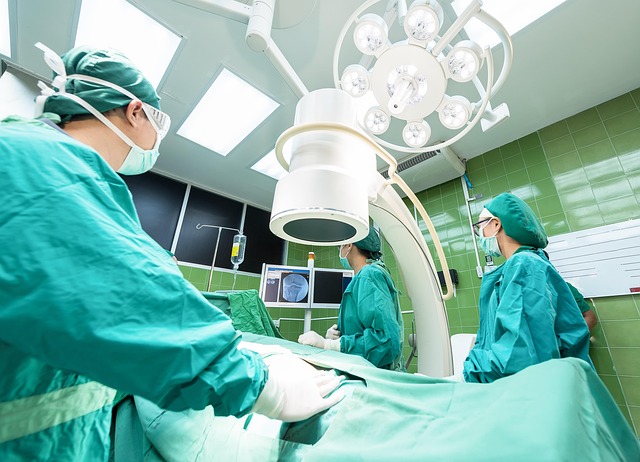In the rapidly evolving world of robotics, the lifespan and reliability of sensors have become pivotal determinants of overall system performance. The phrase “Sensors’ operating hours” now carries a dual connotation: it represents both the cumulative time a sensor remains functional and the strategic allocation of that time to maximize operational efficiency. When robotic platforms are deployed in high‑volume manufacturing, logistics, or service environments, even a few hours of sensor downtime can translate into significant revenue loss, safety risks, and customer dissatisfaction. Consequently, organizations are investing in sophisticated monitoring, predictive analytics, and adaptive control strategies that extend sensor life while maintaining, or even enhancing, productivity.
Why Sensors’ Operating Hours Matter in Robotics
The operational budget of a robotic system is largely driven by the health of its sensor suite. Sensors—whether they are lidar, cameras, force‑torque detectors, or ultrasonic rangefinders—serve as the eyes and ears of the machine, translating physical signals into actionable data. Their performance degrades over time due to environmental exposure, mechanical wear, or electronic drift. As sensors reach the end of their operating hours, the robot’s decision‑making accuracy deteriorates, leading to mis‑aligned movements, increased cycle times, or even safety incidents. By carefully monitoring the cumulative operating hours of each sensor, engineers can schedule timely interventions, perform preventive maintenance, or replace components before they cross critical thresholds. This proactive approach ensures that robotic productivity remains at its peak while avoiding costly unplanned downtime.
Key Sensor Types and Their Operational Lifespan
Different sensors exhibit distinct wear patterns and endurance profiles. Vision sensors, for example, suffer from photobleaching and lens contamination, which can reduce resolution after several thousand hours of continuous operation. Infrared thermal cameras may experience sensor element degradation, especially in high‑temperature workspaces. Lidar units, which rely on laser pulses, are susceptible to dust accumulation and mirror wear, typically lasting 5,000 to 10,000 operating hours under standard conditions. Ultrasonic sensors degrade when their piezoelectric transducers lose sensitivity over time. Understanding these lifespan characteristics allows businesses to forecast maintenance schedules, budget for replacements, and align sensor operating hours with production cycles.
Optimizing Operating Hours Through Predictive Maintenance
Predictive maintenance leverages real‑time data streams to forecast when a sensor will likely fail. By integrating sensors’ operating hours into a centralized health‑monitoring platform, organizations can detect subtle drift or anomaly signatures before they manifest as catastrophic failure. This methodology reduces the risk of over‑engineering spare parts inventories while ensuring that the robotic system operates within safe and efficient parameters. Predictive analytics also allow for “windowing” maintenance activities during low‑productivity periods, thereby preserving valuable machine hours and maintaining a continuous flow of production.
Predictive Algorithms for Sensor Health
Machine learning models such as recurrent neural networks, support vector machines, and random forest classifiers have been successfully applied to sensor health data. These models analyze historical operating hour records alongside contextual variables—temperature, vibration, and workload—to generate a health score for each sensor. When the score falls below a threshold, an alert is generated, prompting inspection or replacement. By combining this predictive insight with asset‑management best practices, companies can shift from reactive “fix‑it‑when‑it‑breaks” paradigms to proactive “repair‑before‑it‑fails” strategies, thereby extending the useful life of sensors and maximizing productivity.
Real‑World Applications in Industrial Automation
Manufacturing plants, logistics hubs, and autonomous service robots all benefit from disciplined management of sensors’ operating hours. In high‑speed assembly lines, the precision of robotic arms depends on the fidelity of force‑torque and vision sensors; a decline in sensor accuracy can cause mis‑assembly or product damage. In warehouse automation, lidar and depth cameras enable autonomous navigation; their degradation can lead to navigation errors, collisions, or throughput losses. By monitoring the cumulative operating hours of these critical sensors, plants can schedule maintenance just in time, prevent production stalls, and sustain the throughput needed to meet market demand.
Manufacturing Lines
In automotive assembly, for instance, robot arms equipped with tactile sensors perform paint‑spraying tasks that require exact force control. The operating hours of these tactile sensors are closely monitored, and predictive models determine when recalibration is necessary. By aligning sensor checks with shift changes, production lines can maintain constant output without interruption. Moreover, by aggregating sensor operating hour data across multiple workcells, plants can identify systemic trends—such as a specific sensor model exhibiting early wear—and adjust supplier contracts accordingly.
Logistics & Warehousing
Autonomous mobile robots (AMRs) in distribution centers rely heavily on lidar, inertial measurement units, and proximity sensors to navigate complex environments. The operating hours of these sensors directly affect navigation accuracy and collision avoidance. By collecting operating hour logs, warehouse managers can predict when sensor performance will degrade and schedule preventative cleaning or calibration sessions. This preemptive approach reduces the likelihood of costly downtime, keeps order‑processing times within SLA targets, and ensures that workforce productivity remains uninterrupted.
Integrating AI for Adaptive Sensor Management
Artificial intelligence is not only useful for predicting sensor failures; it can also dynamically reconfigure sensor networks based on real‑time operating hour metrics. For example, when a vision sensor’s operating hours approach a critical value, an AI controller can redistribute processing load to redundant cameras or switch to alternative sensor modalities, such as infrared or ultrasonic. This adaptive approach keeps the robot operational without compromising on data quality, effectively extending the usable life of each sensor and preserving productivity.
Dynamic Reconfiguration of Sensor Networks
Dynamic reconfiguration involves a layered control architecture where a high‑level AI orchestrates sensor selection and data fusion strategies. The system monitors each sensor’s operating hour count and health score in real time. When a threshold is reached, the AI can re‑route perception tasks to a secondary sensor set, update calibration parameters, or even alter task sequencing to reduce reliance on the aging sensor. This flexibility allows robotic platforms to sustain peak performance over longer periods, thereby enhancing overall business resilience.
Benefits to Business Productivity and ROI
By extending sensors’ operating hours through predictive maintenance and adaptive management, businesses realize multiple tangible benefits. Reduced unplanned downtime translates into higher machine utilisation rates and improved throughput. Lower maintenance costs, achieved by avoiding costly emergency repairs and spare part inventory over‑stocking, improve the bottom line. Enhanced sensor reliability also reduces defects and warranty claims, thereby safeguarding brand reputation. Collectively, these factors contribute to a higher return on investment for robotic deployments and a stronger competitive edge in fast‑moving markets.
Challenges and Mitigation Strategies
Despite the clear advantages, several challenges can impede effective management of sensors’ operating hours. Data silos, where sensor logs are stored in disparate systems, hinder comprehensive analysis. To address this, organisations should implement unified asset‑management platforms that consolidate data from all sensors. Another hurdle is the variability in sensor models and manufacturers, which complicates standardisation of operating hour thresholds. Developing industry‑wide benchmarks and collaborating with suppliers to agree on uniform wear metrics can mitigate this issue. Finally, staff training is essential to ensure that maintenance teams can interpret operating hour data accurately and execute interventions promptly.
Future Trends in Sensors’ Operating Hours Management
As robotics technology advances, the focus on sensors’ operating hours will shift from reactive oversight to proactive, data‑driven ecosystems. Edge computing will enable real‑time health monitoring with minimal latency, allowing for instantaneous adjustments to sensor configurations. Moreover, the proliferation of smart sensors equipped with self‑diagnostic capabilities will provide granular, context‑aware operating hour data. Coupled with cloud‑based analytics, these trends will empower businesses to optimise sensor utilisation at scale, drive predictive maintenance across entire fleets, and unlock unprecedented levels of automation efficiency.
Conclusion
In the age of industrial digitalisation, the mastery of sensors’ operating hours has become a critical lever for unlocking robotic productivity. By understanding sensor lifecycles, employing predictive maintenance, and leveraging AI for adaptive control, businesses can sustain high levels of output, minimise downtime, and protect their return on investment. The continual evolution of sensor technology and data‑analytics tools promises an even more sophisticated future, where robots operate with near‑infinite reliability, guided by precise, real‑time knowledge of every sensor’s remaining lifespan. In this context, managing sensors’ operating hours is not merely an operational concern—it is a strategic imperative that shapes the future competitiveness of robotics‑enabled enterprises.



